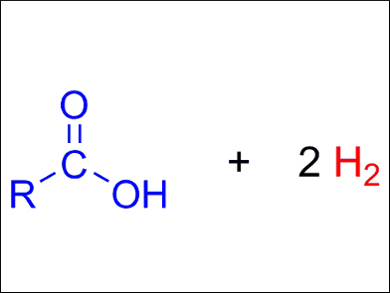Alcohol dehydrogenation has become an important method for the construction of carbon- and oxygen-containing compounds. Until now, the dehydrogenative preparation of carboxylic acids from alcohols has needed ruthenium, rhodium, or palladium catalysts, all of which are expensive platinum group metals.
Hajar G. Ghalehshahi and Robert Madsen, Technical University of Denmark, Lyngby, have developed the first silver-catalyzed alcohol dehydrogenation reaction to form carboxylic acids. Using silver carbonate, potassium hydroxide, manganese bromide, and polyvinylpyrrolidone (PVP) in a mesitylene solvent, benzyl alcohol could be completely converted to benzoic acid. The reaction tolerates a variety of substituents on the aryl backbone of the benzyl alcohol, and aliphatic alcohols can also be converted.
The method creates silver nanoparticles, which act as the active catalyst for hydrogen generation. The purpose of PVP is to disperse silver nanoparticles. Hydrogen evolution was monitored, resulting in 7.3 mmol of hydrogen gas from 4 mmol benzyl alcohol and 0.1 mmol silver carbonate after a 7 hour reaction time. Notably, in contrast to previous reports, this protocol does not require a platinum group metal.
- Silver-Catalyzed Dehydrogenative Synthesis of Carboxylic Acids from Primary Alcohols,
Hajar Golshadi Ghalehshahi, Robert Madsen,
Chem. Eur. J. 2017.
DOI: 10.1002/chem.201702420



